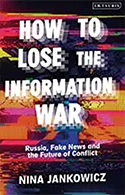 |
| Gil Bashe |
Though misinformation and disinformation have similarities, they are distinct concepts with different origins and causes. And while misinformation can inadvertently undermine trust, those who engage in disinformation aim to undermine trust in institutions and advance their agenda for personal or political gain.
Misinformation is the dissemination or sharing of false or inaccurate information without the intent to deceive. It occurs when individuals unintentionally spread misleading information due to ignorance, misunderstanding, or failure—for whatever reason—to check their "facts.”
How the Centers for Disease Control (CDC) stumbled in their public communication around COVID-19 inoculations provides an example of something that resulted in widespread misinformation. One agency mistake followed another, allowing “alternative facts” and opinions presented as facts to creep into the vacuum left in the wake of CDC missteps. The problem accelerates at hyper speed as everyone with an X or Threads account joins in the social conversation.
Misinformation is the Domino to Confusion
The cascade of communication errors had impacts that affected life and death. The public became confused, and as the scientific story evolved, it became hard for consumers to maintain confidence in the public health system despite its many effective advancements and measures designed to protect their health. This situation illustrates the lasting effect of misinformation: the growing loss of public trust. Months after the pandemic had retreated due to a combination of public health measures urged by the CDC and the advent of vaccines, public sentiment surrounding doctors, nurses and health officials has eroded, and they enjoy far lower levels of the people’s trust than before 2019.
Health officials and care providers aren’t alone; the misinformation swirl also resulted in a documented, dramatic decline in public trust in government and science. While many blame social media for the drop in consumer confidence in institutions, this isn’t entirely the case. Responsibility for this decline in trust falls squarely on those working to use misinformation, often disseminated like a virus through social media, to their advantage. Those in government, public health, science, communications, and media become tools—whether willing or unwitting—and also bear responsibility for failing to act with a clear voice. Perhaps because social influencers have become the go-to for information, informed experts no longer matter.
For example, journalists and editors are subject to publishers' demand that they secure eyeballs. When this happens, the media—especially those in organizations that are driven by ideology, not objective facts—no longer report the news; they are, in a sense, setting the trajectory and pace of events before they unfold. Reporting first and verifying later is a cynical practice with disastrous consequences; it has helped incite cultural—even geopolitical—conflict and promote political tribalism to sell sponsors’ products during the commercial break.
Organizations can retract inaccurate reporting later, but as we’ve seen in the wake of the 2020 election or events in the Middle East, they don’t always. As we have allowed misinformation to become “just another blooper,” a slippery slope makes it possible for a more nefarious form of willful lies to seep into the news flow. Eventually, we may lose our sensibility and sense of differentiation between fact and fantasy. What is proven to be rank conspiracy theory somehow still passes the smell test for too many consumers of the news.
Disinformation is the Rise of Something More Dangerous
While passing misinformation is, by definition, unintentional, disinformation involves deliberately spreading false or misleading information to deceive and manipulate public opinion to achieve a specific goal or advance an agenda.
Though it seems so obvious that it need not be stated, communications professionals must never engage in disinformation. If an attorney takes part in similar fraud, they can be disbarred. While there is no analog for disbarment in communications, we can lose our credibility and good names by using disinformation.
It is not enough to not do something malicious and unethical; positive action is required. If we understand disinformation is wrong, we must be moved to call it out and push back against what is essentially information fraud—as professionals and as an industry.
Doomed to Repeat the Past
From the “Greatest Generation” to Gen X, we have seen—we see—leaders who have mastered the art of propaganda. These voices demonize “the other,” justifying oppressive actions and encouraging followers to act in the interests of what they suggest is “the right way.”
In the case of the January 6th Insurrection, disinformation may have also shaped public perception. Supporters and critics shared and continue to share inaccurate information about election results, contributing to polarized views. They justify their actions as more and more of “the base” believe the 2020 Presidential election was stolen.
In the case of the January 6th Insurrection, a deliberate disinformation campaign to shape public perception has promulgated the “big lie” that the 2020 Presidential election was fraudulently stolen. It’s working; at the time of the insurrection, Republican party leaders decried the violent attack and called out then-President Trump’s inaction; now, as a result of systematic disinformation, many party leaders and GOP lawmakers deny that an insurrection took place. Currently, 34 percent of Republican voters say they believe the FBI was behind the attempt to stop certification of the 2020 election.
While trust in democracy is being attacked, it hasn’t ended there. The media itself, seen since the founding of this country as a critical check illuminating the government's actions for all to see, is experiencing greatly lowered levels of trust. As part of efforts to further undermine Americans’ trust in our nation’s institutions, academia has recently become the focus of an orchestrated disinformation campaign, as shown in recent revelations about the resignation of Harvard President Claudine Gay.
Disinformation is the Death of Truth
As we’ve seen, the critical difference between misinformation and disinformation lies in intent. While misinformation shares false or inaccurate information without malice, disinformation involves deliberate deceit and manipulation. Communications agencies, academic institutions, government and public health officials, corporate communications departments, and the media must know the difference and must dedicate themselves to protecting and promoting objective truth.
Mistakes—unintentional misinformation—happen and must be corrected or nipped in the bud; real leaders must acknowledge errors and take responsibility for them. These same institutions and leaders cannot engage in willful disinformation or conduct campaigns built on exploiting it; doing so is unethical and dangerous. Between our ethical response to fixing misinformation and our moral imperative to stamp out disinformation lies the baseline for keeping society from sliding further into the chaos and mistrust that could damage our democracy.
And yet, the silence from the communications industry on these issues has been deafening. As communicators, we have a responsibility to recognize misinformation and disinformation and stamp out both. Our continued relevance and ability to positively impact society depends upon that understanding and our actions. The communications profession remains vibrant and viable in nations where truth and trust guide our actions.
We relinquish these responsibilities at our peril. Where and when disinformation reigns, truth no longer matters and democracy withers. That we can see this possibility already becoming an acceptable reality is truly frightening.
***
Gil Bashe is c


 Nina Jankowicz, a disinformation expert and founder of Sophias Strategies in Arlington, has signed on to work the US media for the London-based Centre for Information Resilience.
Nina Jankowicz, a disinformation expert and founder of Sophias Strategies in Arlington, has signed on to work the US media for the London-based Centre for Information Resilience.


 Have a comment? Send it to
Have a comment? Send it to 
No comments have been submitted for this story yet.